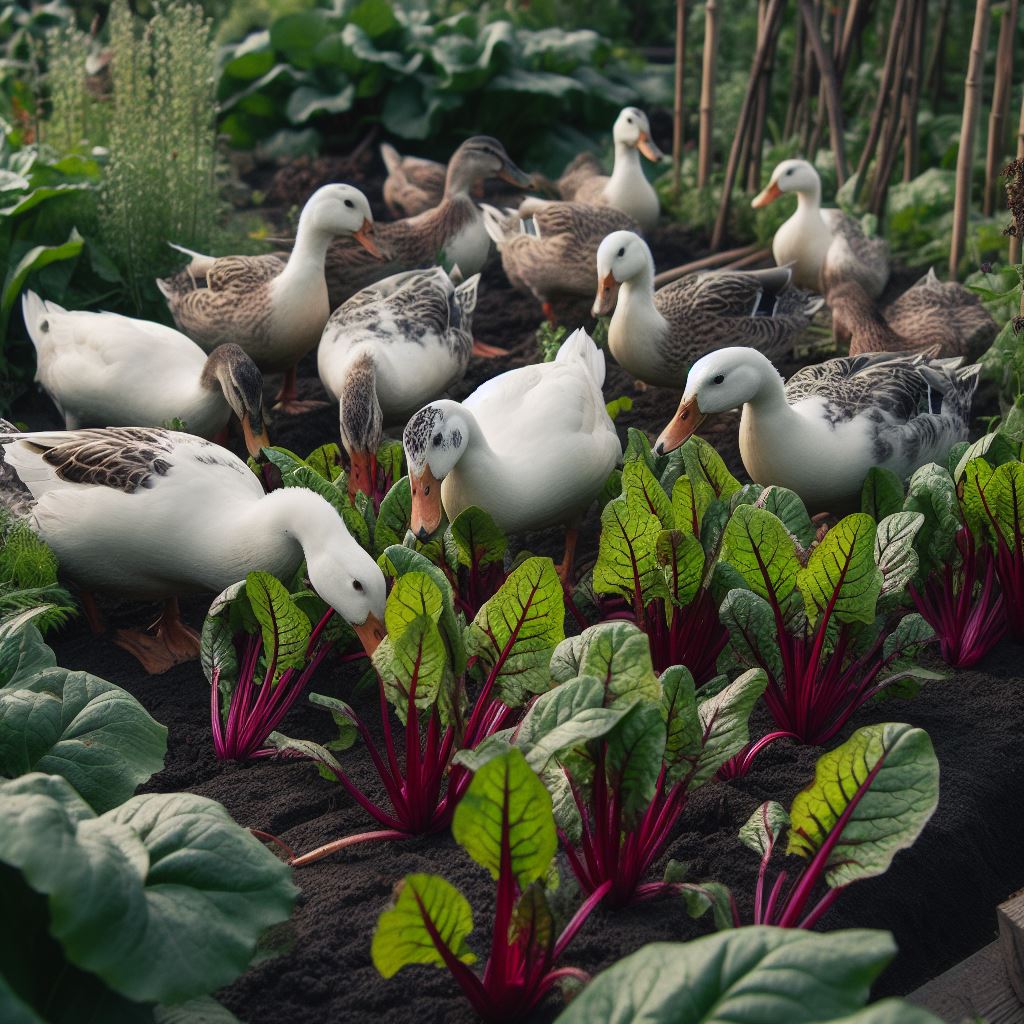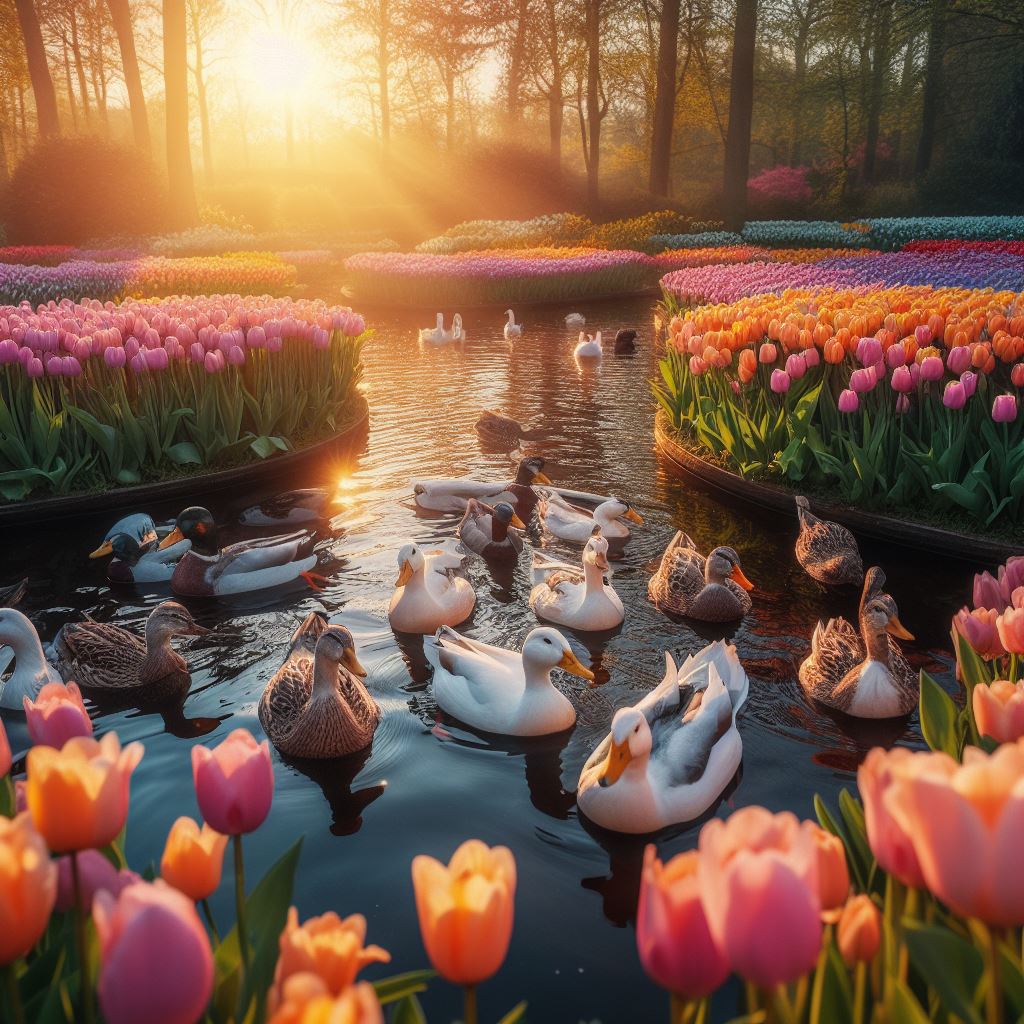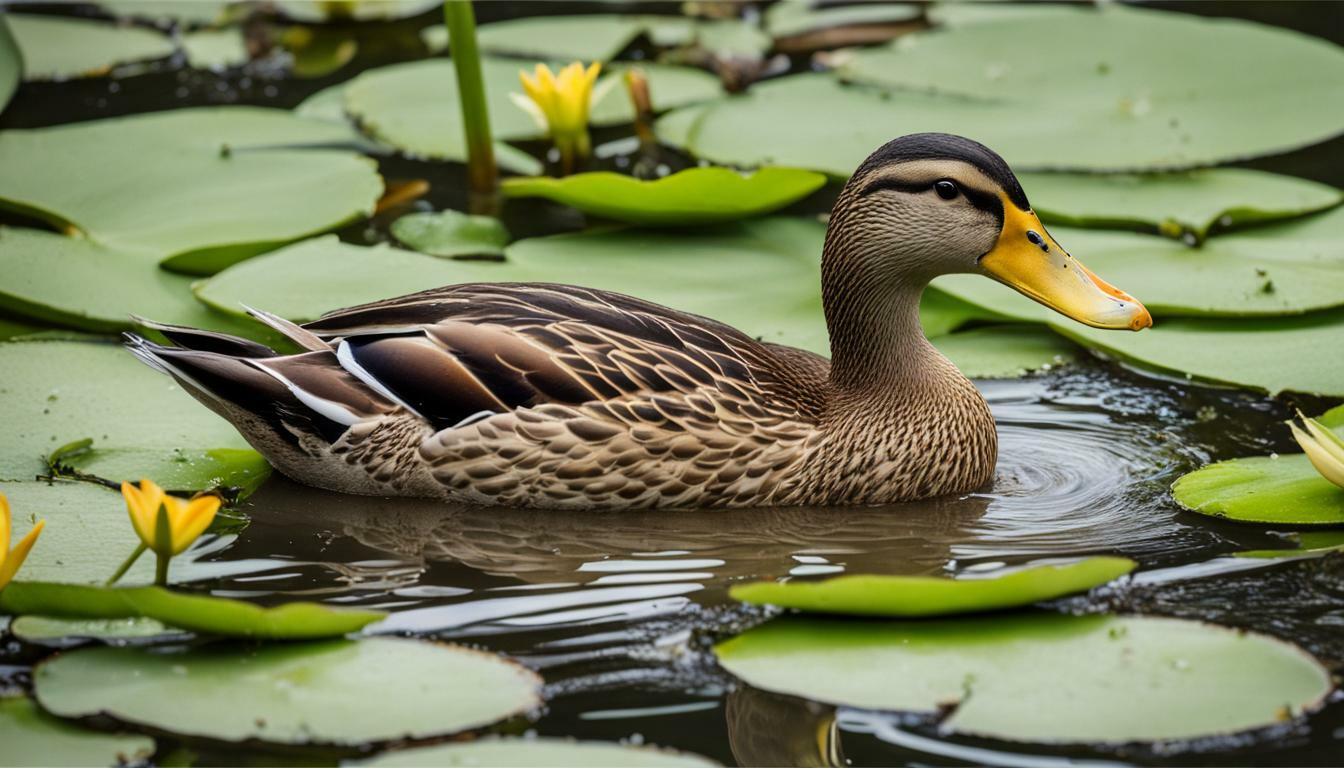Can Ducks Eat Nasturtiums? Experts Reveal the Facts

Table of content:
Nasturtiums are a popular garden flower enjoyed for their bright, tropical colors and peppery taste. But if you have backyard ducks, you may be wondering if these ornamentals are safe for them to eat. As it turns out, can ducks safely enjoy nasturtiums as part of a balanced diet?
Many types of ducks, particularly domestic mallards and wild waterfowl like Anas platyrhynchos, are opportunistic omnivores. This means they forage for a wide variety of foods including aquatics, plants, seeds, vegetables, fruits, grains, and insects.
To stay healthy, ducks need a balanced diet containing adequate protein, fat, starch, calcium and other key nutrients. As waterfowl, they also need constant access to fresh, clean water for swimming and preening. Their varied diet allows domestic drakes and hens to find nutrients in many places.
Backyard duck owners should provide a species-appropriate mash fortified with vitamins and minerals. This can be supplemented with treats like vegetable scraps, birdseed, greens for grazing, and access to ponds or paddling pools for fresh foliage.
Are Nasturtiums Toxic to Ducks?
Gardeners may wonder if ornamentals like nasturtiums can harm backyard poultry like pet ducks. Many common garden plants can cause toxicity issues if ingested by ducks, from bulb flowers like tulips to woody shrubs like oleander. So what about bright blooms like nasturtiums?
Fortunately, all parts of the common nasturtium (Tropaeolum majus) are safe for ducks to consume. Neither the leaves, seeds, nor flowers contain toxic compounds or substances like tropane alkaloids that could cause toxicity in waterfowl. Their digestive systems easily break down and process the plant’s cellulose and nutrients.
Many duck owners report their pets enjoy nibbling on nasturtiums when allowed to forage freely in the garden. The flowers, leaves and green seed pods provide ducks with carotenoids, vitamin C, and other beneficial nutrients to support their health.
As always, moderation is key. Nasturtiums should not make up the bulk of any duck’s diet. But as part of a balanced diet, these lovely blooms can be a beneficial treat for backyard ducks.
Nutrition Information: What’s in Nasturtiums?
Nasturtiums offer a nutritious package of vitamins, minerals, and other beneficial plant compounds for both people and ducks. Some of the key nutrients and compounds found in the flowers, leaves and seeds of nasturtium plants include:
- Vitamin C: Nasturtiums are packed with Vitamin C – even more than materials like oranges and kale! This powerful antioxidant supports immune health and promotes healthy digestion, which is key for ducks as they ingest so much plant material from foraging.
- Beta carotene: This orange/red plant pigment converts to Vitamin A in the body. Vitamin A supports bone development, vision health, reproductive health, and healthy molting of plumage. It’s an important nutrient for egg production in hens.
- Lutein and other carotenoids: These plant pigments support eye and skin health through their antioxidant properties. Healthy levels support proper sight and attractive coloring in ducks.
- Bioflavonoids: These compounds have antioxidant and anti-inflammatory benefits for the cardiovascular system and for general health.
- Trace minerals: Minerals like magnesium, iron, and manganese are essential cofactors for many bodily processes and enzyme reactions. Ducks utilize iron to produce hemoglobin in their blood.
- Nectar sugars: The flowers contain sugars and sweet nectar that provide ducks rapid energy, much like hummingbirds! This helps fuel their active foraging and diving behavior as they explore their habitat.
With this excellent nutrition profile, it’s not surprising duck enthusiasts report flock members will greedily nibble up tender nasturtium plants in the garden! Owners describe ducks devouring leaves, flowers, and even pulling up immature plants to access the seed pods below soil level.
How to Cultivate Nasturtiums for Pets and People
For duck owners who also enjoy gardening, growing nasturtiums provides a beautiful, useful addition to the backyard landscape. These easy-to-grow annuals thrive with little care and provide abundant flowers perfect for decorating salads or snack plates. Follow this simple advice for successfully growing nasturtiums alongside your flock:
Choosing Varieties
Over 80 unique cultivars of nasturtiums exist in a vibrant palette of colors, from rich reds like ‘Empress of India’ to bright yellows like ‘Moonlight’. Some varieties produce more flowers while trailing types are perfect for hanging baskets. All types are safe for ducks and easy to grow. Consider mixing colors and growth habits for visual interest.
Planting Location
Nasturtiums thrive in full sunlight and loose, sandy soil with good drainage. Amend planting sites as needed to create ideal growing conditions. Trailing varieties look beautiful spilling forth from containers and hanging baskets, as well. Providing nasturtiums in movable pots allows you to relocate plants to accessible areas of the yard so ducks, chickens, and other pets can nibble the tasty greens and flowers.
Ongoing Care
Water plants regularly until established, taking care not to oversaturate the soil. Apply a general purpose fertilizer every 2-3 weeks to nourish plants. Remove spent blooms to encourage continuous flowering. As plants mature, they may benefit from small trellises, tomato cages, or other supports to keep foliage and flowers up off wet soil. Monitor for common garden pests like aphids, slugs, and snails. Organic treatments can control infestations so plants continue providing bright flowers and tasty leaves.
Harvesting Flowers and Greens
Once plants grow robustly, begin harvesting flowers, leaves, and young seed pods to sprinkle as edible garnish over salads, sandwiches, cheese platters and more. Rinse materials well before serving to people or pets. The brilliant colors and spicy flavor make nasturtiums a festive, nutrient-packed addition!
Allow some flowers to remain on plants so seed pods can form. Mature seeds can be collected in fall to plant future generations of nasturtiums for next year’s flock. They also make nutritious treats for current duck residents!
Landscaping with Waterfowl in Mind
When designing gardens and landscapes, pet duck owners should consider their flock’s needs for security, diversity of plants, shelter, foraging areas, and clean water sources. Key considerations include:
Safety First
Ensure backyard ponds, water features, or paddling pools have gentle gradual slopes so ducks and other waterfowl can easily enter and exit the water. Reducing steep drop offs prevents injury and drowning. Position resting perches of various heights and textures around aquatic areas for preening and sleeping.
Forage Feasting
Ducks relish grazing on tender shoots, flowers, seeds, fruits, and foliage. Plant a diverse array of edible plants in movable pots to provide “salad bars” your flock will feast on. Herbs, greens, fruits, and edible flowers like nasturtiums, pansies, marigolds, bee balm, and strawberries make excellent choices. Position plants to make it easy for ducks to access without trampling. Provide watering moats to reduce mess.
Shelter from Predators
Ducks feel safest and most secure when they have sheltering shrubs, plants, and hides to retreat to when alarmed. Growing dense stands of ornamentals, shrubs, grasses and ground covers allows ducks to quickly take cover from perceived threats like hawks and predators. Be sure to allow open lines of sight so they can monitor for danger, as well. Position shelters and hiding spots near their favorite lounging, eating, and swimming areas.
Conclusion: Nasturtiums Can Be a Treat for Birds
In summary, both duck experts and enthusiastic pet owners agree: that nasturtiums make a nutritious, harmless supplement to a balanced duck diet. All parts of the plants, from the leaves to seeds to the showy tropical blooms, provide beneficial nutrition without toxicity concerns.
When grown as part of diverse garden landscapes designed with ducks in mind, nasturtiums become more than just beautiful flowers – they double as a food source for pets and people alike.
Welcome. I’m Adreena Shanum, the proud owner of this website, and I am incredibly passionate about animals, especially poultry. I founded adreenapets.com as a labor of love, stemming from my desire to share my knowledge and experiences with poultry enthusiasts worldwide.




